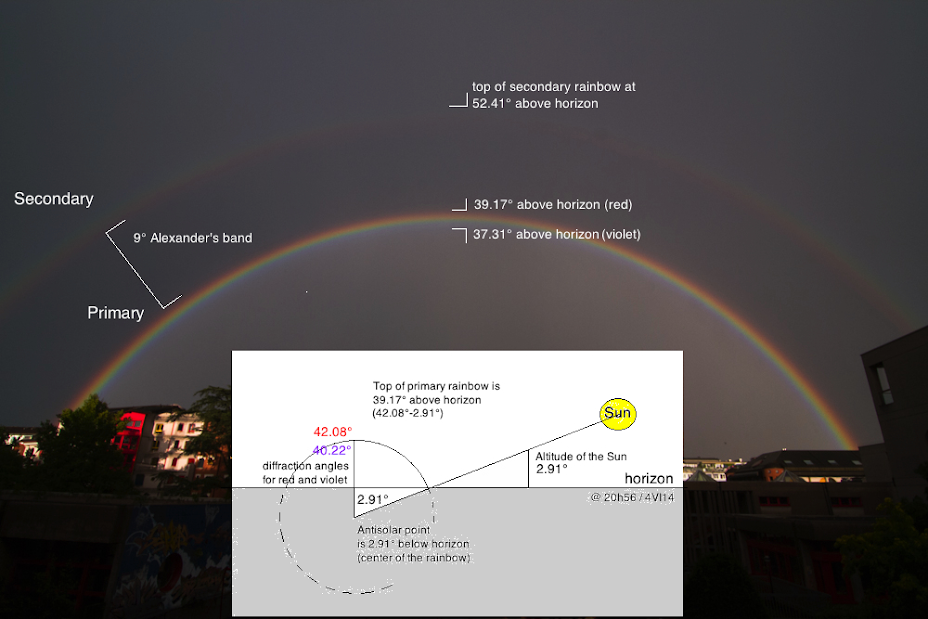A rain shower shortly before 9pm on June 4th produced this particularly large rainbow @ 39° above horizon
A rainbow appears when drops of rain split the Sun’s white
light in Red / Orange / Yellow / Green / Blue / Indigo / Violet (order from the
top down). There are always two rainbows: the primary and the much fainter
secondary (43% less light spread over 1.8x the angular distance of the
primary). The secondary is turned around, so that the rainbows’ two red bands
face each other. The distance between them is 9°.
 |
| Very large rainbow on June 4th, 2014 (Sun at 2.91° above horizon) |
I’ll spare you the math, but the diffraction angle for
violet is around 40° and that of red is 42° - this tells us that the thickness
of a rainbow is roughly 2 degrees (2.36° to be more precise). The center of the
rainbow is the antisolar point – the point exactly opposite the Sun. It is
always below the horizon and goes as far below as the Sun is high in the sky.
This means that larger rainbows will appear when the sun is low, after sunrise
or in the evening. When this particular photo was taken, the sun was about 3°
in the sky, making this one of the largest rainbows possible.
Three zones of luminosity can be observed: the brightest
under the primary (to the right in the image below), the darkest in between the
two rainbows (Alexander's band), and the third above the secondary (to the
left). Light is scattered in such a way in between the primary and the
secondary so that it doesn't reach the observer. There are other rainbows there
- but seen by other people.
 |
| Alexander's band - Rainbows seen by others |
Under the right conditions, the primary bow displays several
other greenish-purple bands of color below its lowest, purple fringe. They are
called “supernumeraries” (not present in my picture)
 |
| Detail of the primary rainbow - Alexander's band is to the right |
 |
|
Detail of the secondary rainbow - Alexander's band is to the
left
The secondary bow has 43% less light spread over 1.8x the
angular distance of the primary
making it considerably fainter
|
